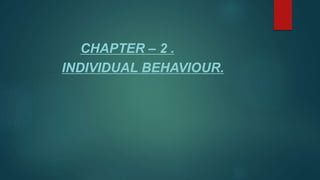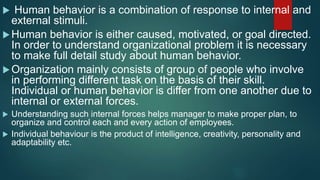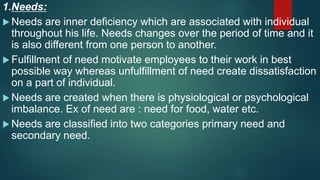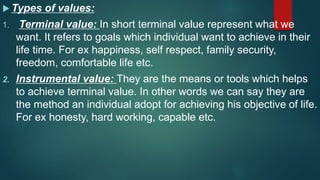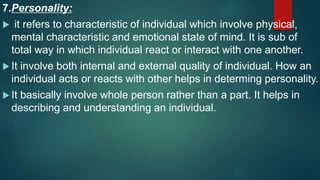Human behavior is influenced by both internal and external factors. Individual behavior varies between people due to differences in internal forces like needs, motives, attitudes, beliefs, values, perceptions, personality, and emotions. Some key internal factors affecting individual behavior include needs which motivate people, motives which direct people towards fulfilling needs, and attitudes which are evaluative judgments that influence behavior. Understanding these internal forces helps managers effectively plan, organize, and control employee actions.
